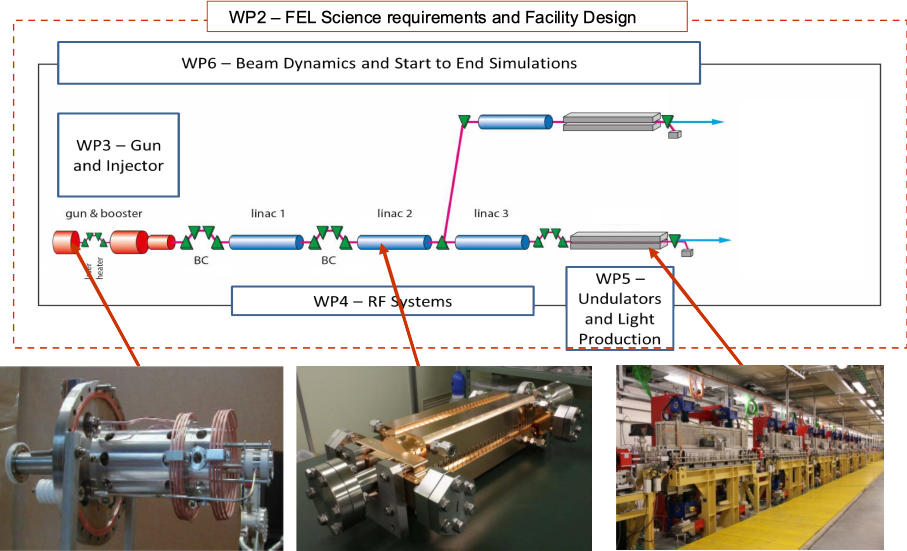|
CompactLight Objectives
The key objective of the CompactLight Design Study is to demonstrate, through a conceptual design, the feasibility of an innovative, compact and cost effective FEL facility suited for user demands identified in the science case.
In order to achieve this, the high-level objectives are:
- to specify the user demands and design parameters for a compact and cost effective FEL driven hard X-ray facility;
- to advance innovative designs for X-band and undulator technology as new standards for accelerator based compact photon sources;
- to present a flexible design that can be adapted to local implementation demands with photon source options for soft and hard X-rays as well as Compton light.
Workpackages (WPs) and WP Leaders
- WP1: Project Management and Technical Coordination;
Leader: Gerardo D'Auria (ST)
- WP2: FEL Science Requirements and Facility Design;
Leader: Jim Clarke (STFC)
- WP3: Gun and Injector;
Leader: Massimo Ferrario (INFN)
- WP4: RF System;
Leader: Walter Wuensch (CERN)
- WP5: Undulators and Light Production;
Leader: Federico Nguyen (ENEA)
- WP6: Beam Dynamics and Start to End Modelling;
Leader: Avni Aksoy (UA-IAT)
- WP7: Global Integration with New Research Infrastructures;
Leader: Regina Rochow (ST)
- WP8: Beam Instrumentation and Diagnostics;
Leader: Alessandro Cianchi (UniToV)
Project Timescale
- Project Start: 01 January 2018
- Project End: 31 December 2021
|
| Concepts and Approach
The overall concept underlying the CompactLight Design Study is to bring together recent advances in many of the important technical systems which make up an XFEL injector, linac and undulator to produce the design of a next-generation facility with significantly lower cost and size than existing facilities. The goal is to make XFELs feasible for smaller countries, regions and universities.
There are a number of new (and imminent) XFEL facilities around the world including the superconducting European XFEL, FLASH and LCLS-2 and the normal conducting SACLA, the PAL-XFEL and the SwissFEL as well as older facilities such as the LCLS and FERMI. All of these facilities have designs that were fixed, and technological choices made, at least five years ago and in some case many more.
In the intervening period there has been intense electron-accelerator development driven by the XFEL community itself, the linear-collider community as well as by other applications such as Compton scattering sources. Relevant advances include:
- Lower emittance and higher repetition-rate photo-injectors
- High-gradient linacs – Gradients in excess of 100 MV/m are now routinely achieved
- High-efficiency klystrons – Techniques to bring efficiencies above 60% at high frequency have been demonstrated
- Advanced concept undulators – Cryogenic permanent magnet undulators and superconducting undulators have both been demonstrated and since used operationally on 3rd generation light sources in recent years
- Improved diagnostics including X-band deflectors for longitudinal bunch dynamics
- Better beam dynamics and optimization tools including those developed for linear colliders.
It is our belief that these developments, taken and optimized together in a comprehensive study, will allow us to design a facility with significantly lower cost and size than existing facilities.
|


